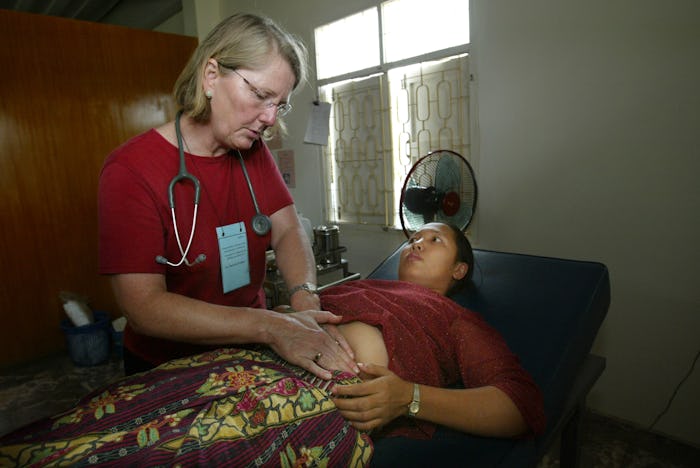Life

How To Help The Refugees In Minnesota Who Were Diagnosed With Tuberculosis
A report out this week has many panicking over what might ultimately be nothing more than imprudent fear-mongering. According to the Minnesota Department of Health, 296 refugees in the Minnesota were diagnosed with active tuberculosis from 2010 to 2014, making it the state with the highest reported number of TB cases among refugees. As news spread of the state's tuberculosis numbers, many reacted on social media with fear or xenophobia — when really, there's not much to be scared of, and we should instead be wondering how to help refugees with tuberculosis in Minnesota.
First of all, Minnesotans and other Americans can assuage their fears. The United States' Centers for Disease Control and Prevention (CDC) has guidelines for TB screening for immigrants, and seeing higher numbers of the disease in foreign-born immigrants is nothing new. "A third of the world has latent TB infection," the Minnesota Department of Health told Breitbart in a statement. It explained:
The majority of those refugees actually developed TB disease after being in Minnesota at least five years, and many had been in the US at least 10 years, so these are not new arrivals to the US. ... The presence of other medical conditions is the chief risk factor for the activation of TB disease in a person with latent infection. These conditions include diabetes, cancers, immune suppressing medications, and renal disease. These are conditions common with the American diet and lifestyle, and new risk factors for these refugee populations.
In other words, refugees are screened before departing for the United States, and they're screened and monitored for the disease once they arrive in the country. If refugees are diagnosed with active TB, they are treated with antibiotics, and latent TB (which is not contagious) is either treated or monitored continuously to ensure it doesn't become active.
While TB can be spread through the air, it's not highly contagious. "Just being in the proximity of someone with tuberculosis, you're considered a low risk," Doug Schultz, spokesman for the Minnesota Department of Health, told The Forum in 2013. Disease transmission, he said, requires "prolonged, close contact."
So now that we've settled that, how can you help refugees with TB? First of all, make sure to convey accurate information to those worried about tuberculosis entering the United States. Let's work against spreading misinformation regarding the disease or the risks of accepting immigrants into the country.
Second, consider donating to a nonprofit working to end tuberculosis. A third of the world has latent tuberculosis, and organizations like the Stop TB Partnership are working to get free anti-tuberculosis drugs to countries that need them most. $20 will buy one full treatment and help the organization reach its vision of a TB-free world. Another organizations to consider donating to is the TB Alliance, which aims to develop more advanced anti-tuberculosis drugs.
Third, consider getting involved with the U.S. Committee for Refugees and Immigrants. There are so many ways to get involved that it's easy to pick something that feels right to you: Consider donating money or goods; volunteering to welcome refugees, teach kids, mentor families, or transport newcomers to doctors' appointments; or advocating on refugees' behalf.
Whatever you do, make sure you're acting as part of the solution — not partaking in what is, in reality, nothing more than a paralyzing echo-chamber.